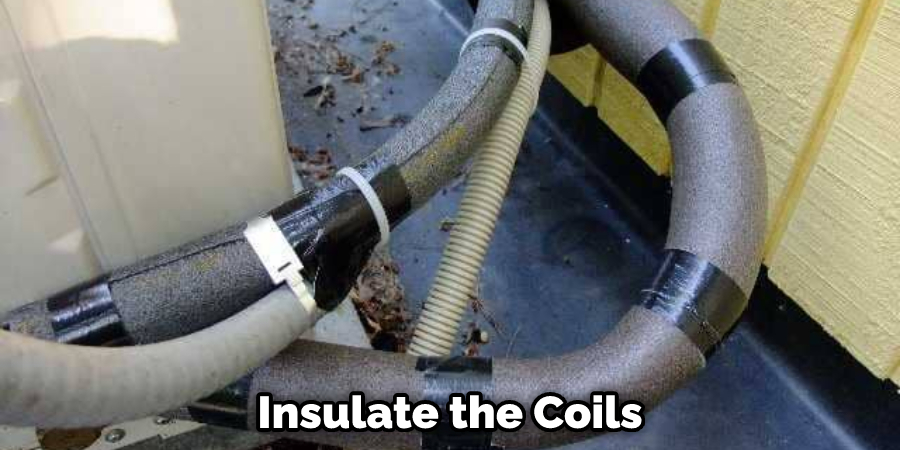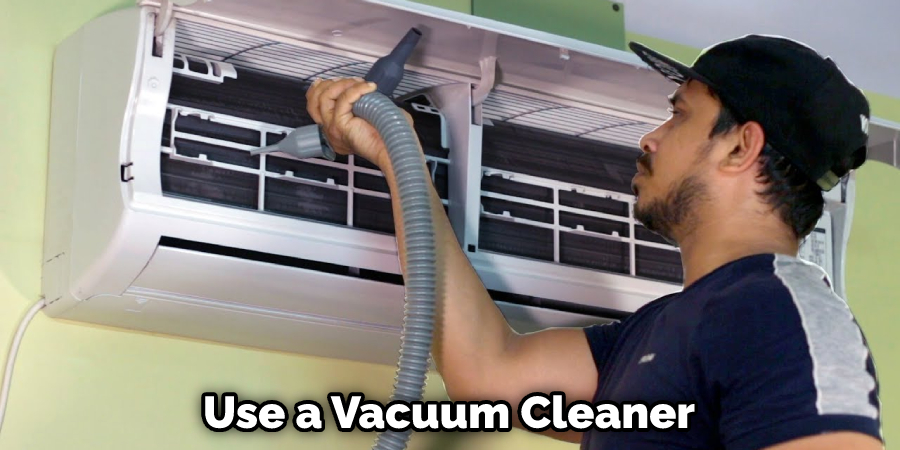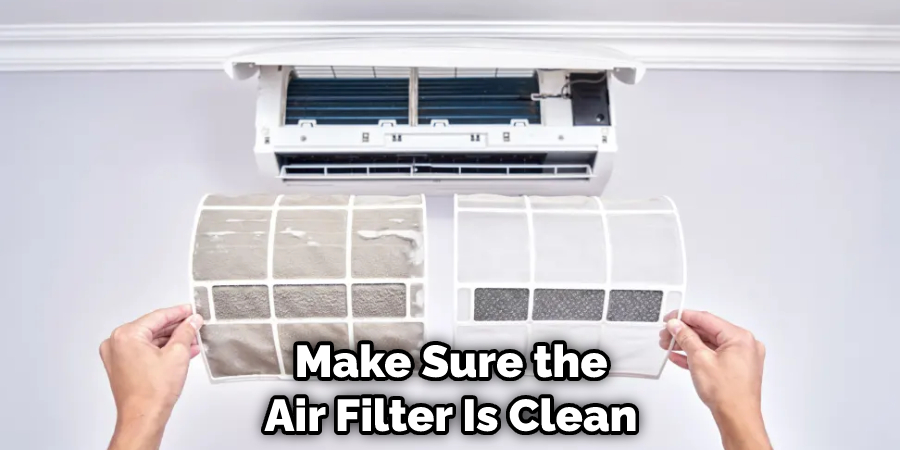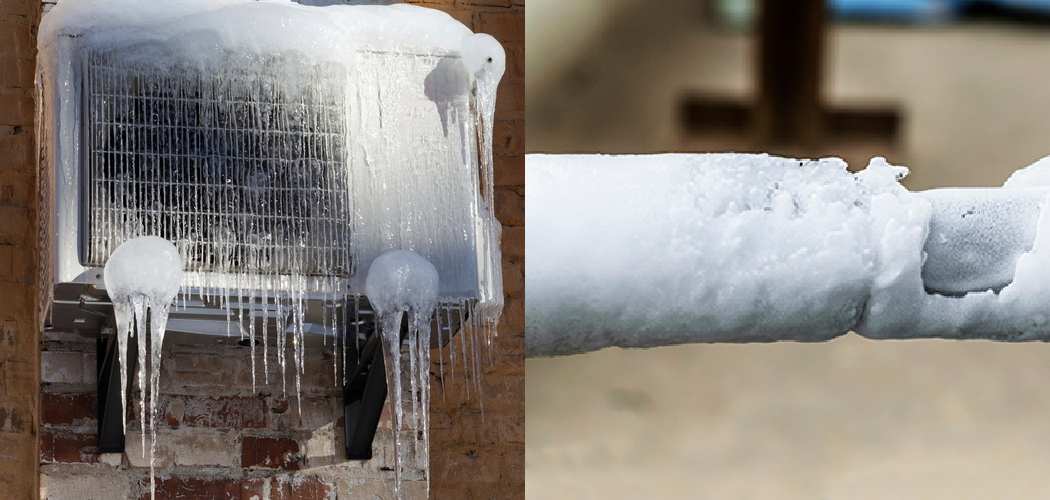It’s that time of year again when the ice starts to build up on your air conditioner. The frigid temperatures of winter can be harsh on your body and your home. One particularly pesky problem that arises during this time is the build-up of ice on your air conditioner. In this blog post, we will show you how to remove the ice from air conditioner safely and effectively.

The most common reason ice builds up on an air conditioner is that the unit is not receiving enough air flow. This can be caused by a number of factors, including a dirty air filter, closed vents, or obstructed return ducts. Ice can also build up if the unit is low on refrigerant. So let’s go through this post about how to remove ice from air conditioner
Things You Will Need to Remove the Ice From Air Conditioner
Before you start, make sure that you have the following materials:
- A hairdryer
- A soft cloth
- A stiff brush
- Good absorbing surface
How to Remove Ice From Air Conditioner In 4 Steps
If you notice ice forming on your air conditioner, it’s important to take action to remove it. Ice can damage your air conditioner and cause it to work less efficiently. Here are some tips on how to remove ice from your air conditioner:
1. Turn Off the Power to Your Air Conditioner
Before you do anything, make sure to turn off the power to your air conditioner. This will help prevent any further damage from occurring. Otherwise, the ice could melt and cause water damage.
2. Locate the Ice
Once the power is off, take a look at your air conditioner to locate the ice. Ice usually forms on the coils or evaporator.
3. Remove the Ice
Once you’ve located the ice, you’ll need to remove it. You can do this by using a soft brush or cloth to gently break up the ice. You can also use a hairdryer on its lowest setting to melt the ice. Be sure not to use too much heat, as this could damage the coils. So you have to be careful.
4. Prevent Future Ice Formation

Once you’ve removed the ice, it’s important to take steps to prevent it from forming again in the future. Make sure that your air conditioner is properly maintained and that the coils are clean. You can also insulate the coils to help prevent ice formation. Make sure that the area around your air conditioner is well-ventilated to prevent moisture buildup. Finally, keep the temperature in your home consistent to prevent ice formation.
Precautions to Take Before Removing Ice From Air Conditioner
1. Turn Off the Power:
Before you do anything, make sure to turn off the power to your air conditioner. This includes both the power to the unit itself and the breaker in your electrical panel.
2. Locate the Main Shut-off:
Once the power is off, locate the main shut-off valve for your air conditioner. This is usually located near the outdoor unit. Make sure that this valve is turned to the “off” position.
3. Shut Off the Water Supply:
With the power and main shut-off valves turned off, you can now shut off the water supply to your air conditioner. This will prevent any water from coming into the unit while you’re working. And also, don’t forget to shut off the power to the unit as well!
4. Drain the Unit:
To remove all the water from the unit, you’ll need to open the drain valve and allow everything to drain out. Once it’s empty, close the valve again. You have to be careful when doing this because the water can be very cold.
5. Clean the Unit:
Now that the unit is empty, you can clean it. Use a soft brush to remove any dirt or debris from the coils and fans. You can also use a vacuum cleaner with a soft brush attachment to make sure everything is clean. Be careful while cleaning so you don’t damage any of the components.

6. Move the Air Conditioner to an Open Location
The first step is to move your air conditioner unit to a location where it can get more air circulation. If your unit is located in an enclosed space, the airflow will be restricted, and this could cause the coils to freeze. Additionally, check the outdoor compressor unit to ensure that it isn’t obstructed by any plants or other objects.
7. Check the Air Filter
A dirty air filter can also cause your AC unit to freeze up. This is because the air filter will restrict airflow, which in turn will cause the coils to become too cold. To prevent this from happening, be sure to check the air filter monthly and replace it as needed.
You Can Check It Out To Seal Window Air Conditioner
Frequently Asked Questions
How Do I Get Ice Out of My Air Conditioner?
It’s not unusual for ice to form on the coils of your air conditioner during very humid weather. While this isn’t necessarily a cause for alarm, it can be a sign that your air conditioner is working overtime to cool your home and may need some attention. Here are a few tips for removing ice from your air conditioner and keeping it from coming back.
How Do You Melt Ice on Coils?
The best way to remove ice from your air conditioner’s coils is to let it melt on its own. Once the ice has melted, you can use a soft brush or cloth to remove any residue. If the coils are very dirty, you may need to use a mild cleaning solution to remove all of the dirt and grime.
How Do I Prevent Ice From Forming on My Air Conditioner’s Coils?
There are a few things you can do to prevent ice from forming on your air conditioner’s coils. First, make sure that the air filter is clean and replaced regularly. A dirty air filter will restrict airflow and cause the coils to freeze. You should also make sure that the coils are clean and free of dirt and debris. Lastly, keep the area around your air conditioner clear of any obstructions.

Can I Use a Hairdryer to Defrost My Ac?
Yes, you can use a hairdryer to remove ice from your air conditioner’s coils. Just be sure to keep the hairdryer on the low setting to avoid damaging the coils. You should also make sure that the area around the air conditioner is clear of any flammable materials before using a hairdryer.
Why Do Coils Freeze Up?
There are a few reasons why coils may freeze up. One reason is restricted airflow. This can be caused by a dirty air filter or by obstructions around the unit. Another reason is if the temperature around the unit is below freezing. If this is the case, you’ll need to move the unit to a warmer location. Finally, coils may freeze if the humidity is too high. This can be remedied by using a dehumidifier in the same room as the air conditioner.
Can I Pour Hot Water on Frozen Air Conditioner?
Pouring hot water on a frozen air conditioner is not recommended. This can cause serious damage to the unit and may void your warranty. If you must use hot water, be sure to pour it slowly and carefully onto the coils. Never use boiling water, as this can crack the coils. Once the ice has melted, be sure to clean the coils and fans to prevent further freezing.
How Long Does It Take for an Ac Coil to Unfreeze?
It usually takes about an hour for an air conditioner coil to unfreeze. However, this will depend on the size and capacity of your unit. If you have a large unit, it may take longer for the coils to thaw. Additionally, if the temperature around the unit is very cold, it will take longer for the ice to melt.

Conclusion
We hope these tips will let you know how to remove ice from air conditioner so easily and without any confusion. Following these tips will help you remove ice from your air conditioner and prevent it from forming again in the future.
By taking steps to prevent ice formation, you can keep your air conditioner running efficiently for years to come. If you have any questions about how to remove ice from air conditioner, please leave a comment below, and we’ll be happy to help. Thanks for reading!
You Can Chack It Out Prevent Water in Air Compressor

